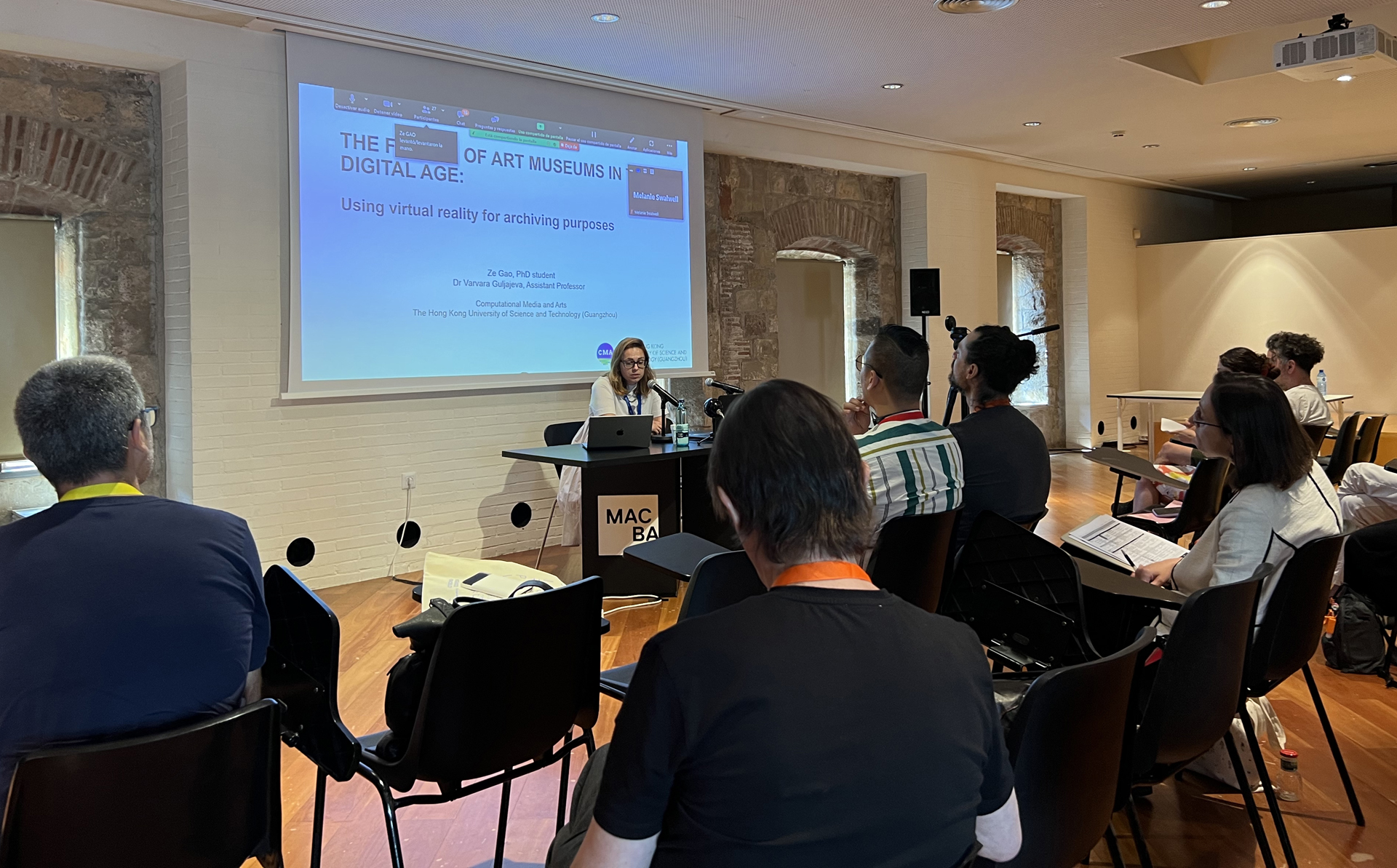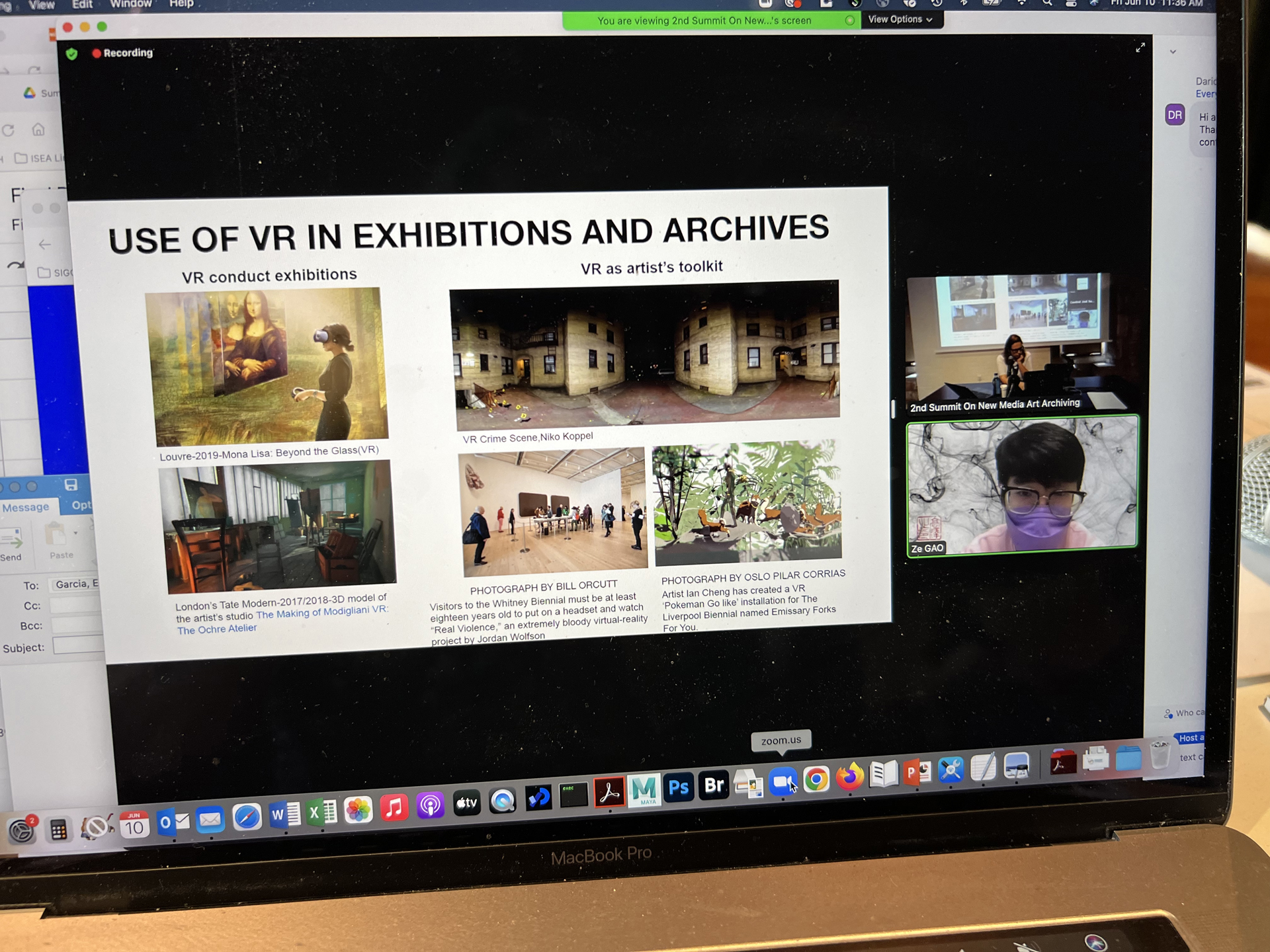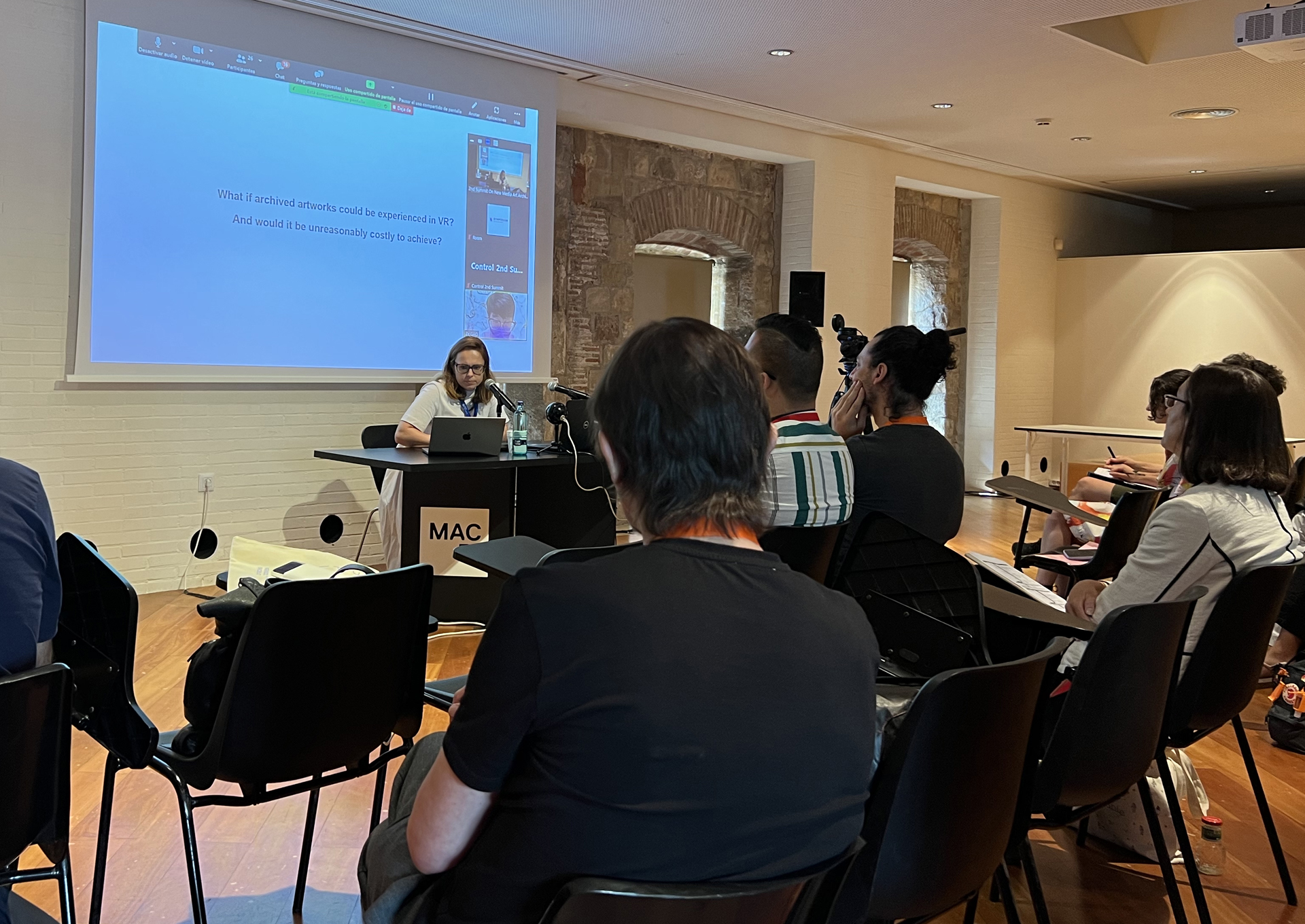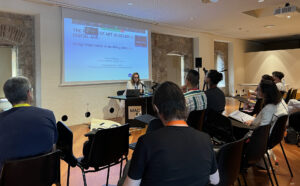“The Future of Art Museums in the Digital Age: VR for Archiving Purpose” presented by Gao and Guljajeva
Symposium:
- ISEA2022: 27th International Symposium on Electronic Art
-
More presentations from ISEA2022:


Session Title:
- Summit on New Media Art Archiving: Long Papers
Presentation Title:
- The Future of Art Museums in the Digital Age: VR for Archiving Purpose
Presenter(s):
Venue(s):
Abstract:
Art museums are committed to expanding the digital display of their archives by using digital technology, diversifying the types and forms of their exhibitions, increasing archival formats, and promoting repeated visits anytime, anywhere. Many museums have also begun to use virtual reality (VR) display platforms such as Google Arts & Culture, which is intended primarily for viewing art in high-resolution images and video. More than 2,000 cultural institutions, including the Guggenheim Museum in New York and Orsay Museum in Paris, use this platform to provide virtual content. It is reasonable to infer from this that the rising popularity of VR technology and of online VR platforms targeting the art sector should also have potential applications in archival work. For example, the National Museum of Modern and Contemporary Art (MMCA) in Seoul already utilizes VR technology for documenting its physical exhibitions. However, despite the growing application of this technology, few studies have comprehensively studied the forms and content of the artworks archived in traditional museums (i.e., paintings and photographs) and by comparison to electronic art archives that utilize modern VR technology. By analyzing the advantages and disadvantages of virtual reality technology, this study aims to explore the potential of such applications in the context of digital archiving. In this paper, we take several major modern and/or contemporary art museums as examples for analysis and comparison. We show that virtual reality technology has brought advantages to the archival work of contemporary art museums, such as enhanced immersion and expanded diversity of exhibits. Further, it appears likely that the increasing commodification of VR technology will further possibilities in the future.









